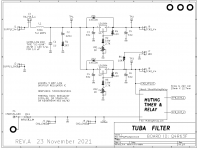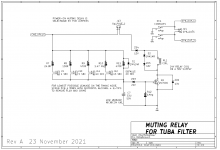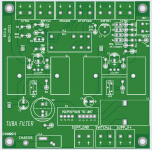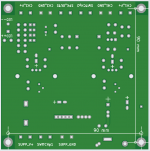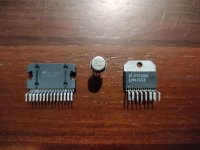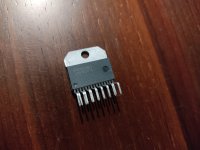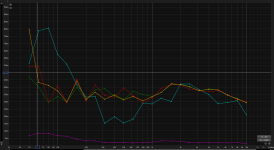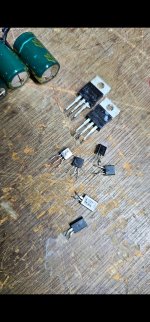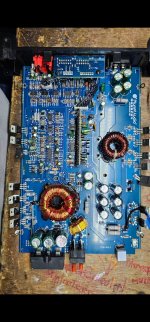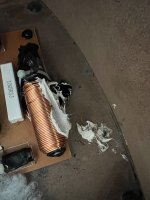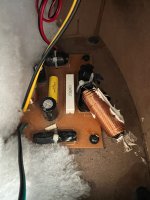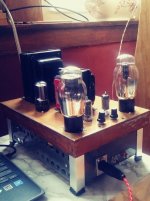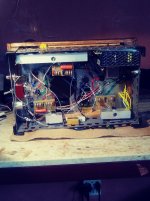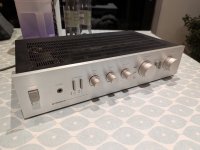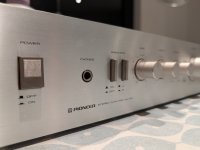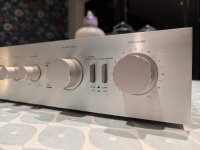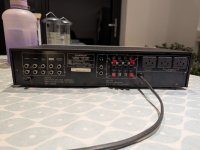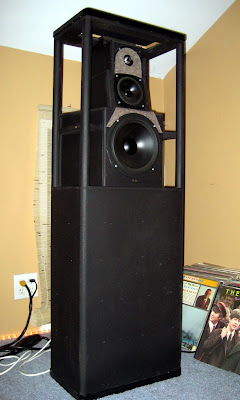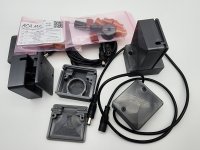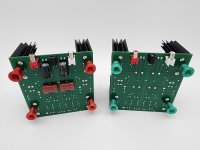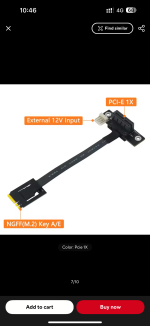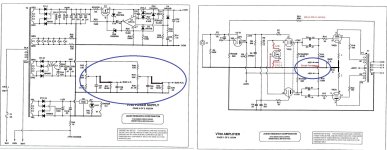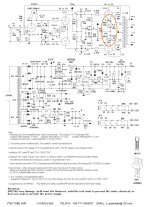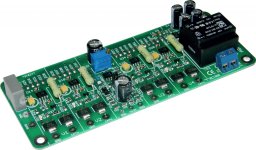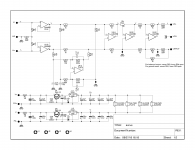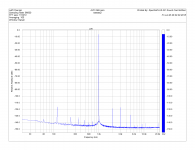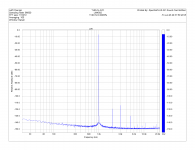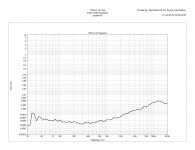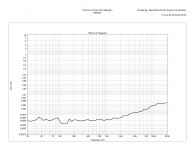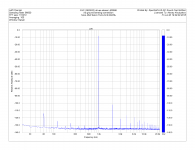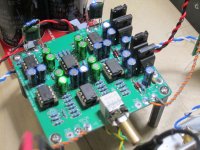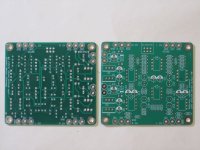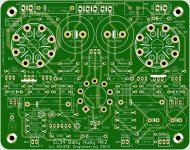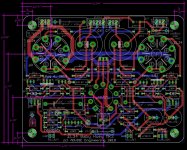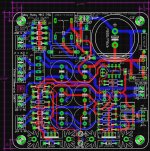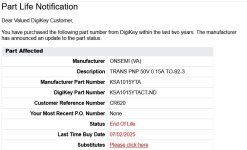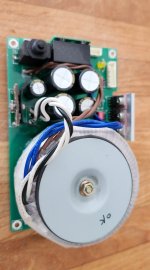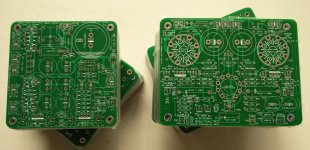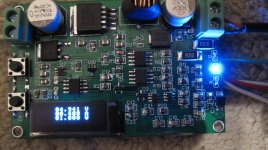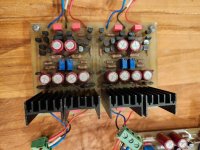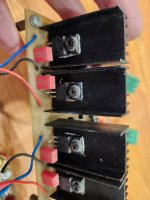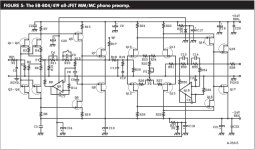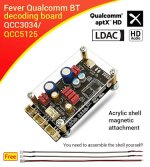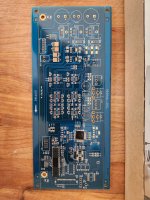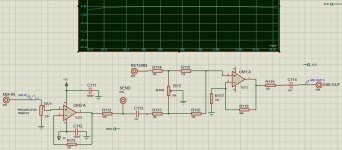Marshall JCM 900 Reverb Issues
- By nodnarb
- Tubes / Valves
- 3 Replies
Short Story (kind of)
I have a Marshall JCM 900 4100 100W Dual Reverb head from aprx 1990/1991 and am trying to troubleshoot why the reverb on this amp head is not working.
See the long story for more verbose details including link to the preamp schematic, but unless I am missing something just about everything in this amp works including the reverb tanks, so my current troubleshooting assumption is that there is something wrong with the "Reverb Drive" portion of the preamp, hence why I am here.

Please correct any of these assumptions, but my top level review of the "Reverb Drive" circuit is that the three op amps used before the reverb tank are voltage followers that are there to prepare both the impedance and the current to drive the actual reverb tank.
And if I were to probe connections with an oscope in that "Reverb Drive" portion of the circuit I would be able to see a sine wave on the scope. I am aware that the components of the drive portion of the circuit traditionally are the least likely to fail (in my opinion) being that they are just run of the mill resistors, caps, and common IC for opamps, and while none of them are blackened etc a PCB that is 30+ years old could have some issues or sometime things go bye bye w/o looking fried. I also acknowledge that the more common failures to reverb are tubes, tank, and rca connections, but I view I have got past that (see Long Story below), so I will happily eat crow if my assumption this opamp area is the culprit is inaccurate.
I "tried" to keep the short story short, so many other info about what I have done and got to this point may be answered in the long story. I very much appreciate you reading any part of this and pre thanks for any replies including "you are way off be careful and learn way more before you try again". This stuff is fun!
The plan, testing, and how I'm stuck
With the amplifier on and a 1khz sine wave playing through it and heard through the speaker cab, I placed a scope ground on the chassis and the other lead to the end of C16 where C16, C17, R24, and pin3 of the TL071 join assuming that a) this was the input to the reverb drive circuit and b) that the ac signal of the sine wave would be low voltage because either C14 or C16 decoupled the high voltage DC. Unlike a successful sine wave appearing on the scope when I tried the scope leads on the input jack and from reading the "send" from the fx loop, the end result on the scope for this start of the "Reverb Drive" was what I will refer to as low mv noise and not a sine wave. I had a similar noise reading on the black lead that goes to the reverb tank, but I was unclear if the scope leads should be pin/shield or pin/ground since the BK lead to the reverb tank doesn't go to ground it goes back to R25/R26. These tests had no reverb tank connected and the BK and RD leads were loose in the event that makes these tests invalid.
My plan going in was that the connection at C16/C16/R24 was going to work OK on the scope and then the problem lay ahead in the circuit, but since it did not work I'm here seeking clarification on some additional items.
My reading of the schematic, the connection from R20 to R22 that goes around the reverb drive/recovery is for the dry signal to go to and why the amp works w/o reverb and that connection between R20 to R22 goes only in that direction and its not a "negative feedback loop".
❔ I should be able to put the scope between R20 and R22 and see an ac only (since DC decoupled) on the scope and should see a clean sine wave right?
❔ I should also be able to see a clean sine wave on any of these points too right?
Intersection of C14/R20/R23 with scope ground lead to chassis
Intersection of C14/R20/R23 with scope ground lead to chassis
Either side of R27 with scope ground lead to chassis
Either side of R28 with scope ground lead to chassis
Either side of R29 with scope ground lead to chassis
Unsure R25/R26 intersection should have a sine wav.
It is my understanding that I "could" see a sine wave at the intersection of C14 and R3, but that would have high DC voltage on it so I am preferring to stay clear of that (I know I can change the DC coupling, but avoiding for safety lower risk and not blowing up my old scope).
❔ Does the reverb tank have to be connected to test the "Reverb Drive" portion of the circuit?
❔ Please confirm that all three op amps are preparing current and that the two MC1458 aren't setup to do a push pull or inversion thing where one is handling one side of the polarity. I am basically just asking for ways to prove what works and doesn't and not necessarily a reason why this circuit is a bad design as outlined in other posts here on diyAudio.
❔ Please confirm that my secondary reverb tank that does have a different input impedance would actually be a better tank to try since it would require the drive part of the circuit to produce less current. It doesn't work either, so I am looking for confirmation that it should/could work if the amp worked.
❔ Please provide any suggestions on places to check with DMM or scope to help diagnose this issue.
❔ Please provide any background as my concern on the tip shield being isolated and feeding back to R25/R26 and not ground on the BK going to the reverb tank and how that makes it less easy for me to understand how to test that connection.
Long Story
I have a JCM 900 4100 100W Dual Reverb from aprx 1990/1991.
Everything about it is in working order except the reverb (both channel gain, both channel volume, bass, mid, treble, presense, fx loop, footswitch are all OK).
I have an seldom used background in electronics, but no specialty in guitar amp (and am aware of the safety concerns of the high voltages in such amps).
Below are the steps I used to troubleshoot it.
Troubleshooting steps...
The numbers on the reverb tank are Accutronics 8DB2C1D
The numbers on the back of the amp are Y37594
The sticker on the side of the amp chassis implies March 1990 creation.
Looking at the schematic everything before the "Reverb Drive" section including the tone stack, presence, fx loop, V1a, V1b, V2a and everything after the "Reverb Drive" including the V2b, V3, power amp and putting an external audio input into the red return cable where it can be heard, adheres to the per channel attenuation from each reverb pot, it leaves me to believe that the reverb drive circuit is whacky since the BK input cables beeps pin and shield with a continuity DMM. There isn't much too the "Reverb Drive" section as its a couple of op amps TL071 and MC1458. Visually inspecting the top of of the board, none of the components look fried or problematic.
All of the components related to the reverb drive circuit pass a continuity test making the assumption that there may not be a PCB trace issue.
All of the resistors related to the reverb drive get expected ohm values within range noting the check was done with DMM on an in circuit reading.
I didn't check the caps as I am unaware of how to test those in circuit and was not about to yank those off the PCB yet. I didn't check any voltages to the IC pins while the amp was on yet (see above for the one test I tried and failed, stopped, then posted this post).
Testing was done by playing a 1khz sine wav file through computer umc 1820 audio interface out of its headphone output into the amp. The tone can be heard through the amp.
A scope successfully "sees" the 1khz sine wave at the input jack to the amp and if the scope reads the values from the FX loop Send.
I did not receive a sine wave at the C16/C16/R24 connection, so I'm here to get some clarification on how to test things further.
The preamp and power amp tubes are not original but they are 30+ years old as are the filter caps, etc. They do not appear to be microphonic.
Since I can "hear" the other aspects of the amp and swapping order of the preamp tubes makes no difference, it appears the tubes are in working order for their age.
Once I solve this reverb problem, I have additional questions/threads related to other aspects of this relic (for example there is either a very low transformer or filter cap hum can be heard not through the speaker).
The oscope I have access to probably is a dinosaur. It is an analog BK Precision 2160. It works minus any waveform I see moves to the left like an old school typewriter so I haven't found a way to have it lock in place.
References that got me here
JCM 900 Preamp Schematic from 1990
(I feel this is the schematic for my JCM900 based on date)
DIY Audio forum post from Gonecat that really helped me so far
(This forum post from this group here was very informative)
Gonecat,JMFahey,wg_ski,wahab,dotneck335 all were very helpful.
More Marshall Schematics
Marshall Guitar Amp Forum topic related to the same reverb tank I have
You Tube from Uncle Doug that helped me remember how to use an oscope
You Tube Uncle Doug another good video
You Tube Headfirst Amps showing examples of using an oscope on a tube guitar amp
Rob Elliot - Spring Reverb Unit For Guitar or Keyboards
Rob Elliot - Care and Feeding of Spring Reverb Tanks

I have a Marshall JCM 900 4100 100W Dual Reverb head from aprx 1990/1991 and am trying to troubleshoot why the reverb on this amp head is not working.
See the long story for more verbose details including link to the preamp schematic, but unless I am missing something just about everything in this amp works including the reverb tanks, so my current troubleshooting assumption is that there is something wrong with the "Reverb Drive" portion of the preamp, hence why I am here.
Please correct any of these assumptions, but my top level review of the "Reverb Drive" circuit is that the three op amps used before the reverb tank are voltage followers that are there to prepare both the impedance and the current to drive the actual reverb tank.
And if I were to probe connections with an oscope in that "Reverb Drive" portion of the circuit I would be able to see a sine wave on the scope. I am aware that the components of the drive portion of the circuit traditionally are the least likely to fail (in my opinion) being that they are just run of the mill resistors, caps, and common IC for opamps, and while none of them are blackened etc a PCB that is 30+ years old could have some issues or sometime things go bye bye w/o looking fried. I also acknowledge that the more common failures to reverb are tubes, tank, and rca connections, but I view I have got past that (see Long Story below), so I will happily eat crow if my assumption this opamp area is the culprit is inaccurate.
I "tried" to keep the short story short, so many other info about what I have done and got to this point may be answered in the long story. I very much appreciate you reading any part of this and pre thanks for any replies including "you are way off be careful and learn way more before you try again". This stuff is fun!
The plan, testing, and how I'm stuck
With the amplifier on and a 1khz sine wave playing through it and heard through the speaker cab, I placed a scope ground on the chassis and the other lead to the end of C16 where C16, C17, R24, and pin3 of the TL071 join assuming that a) this was the input to the reverb drive circuit and b) that the ac signal of the sine wave would be low voltage because either C14 or C16 decoupled the high voltage DC. Unlike a successful sine wave appearing on the scope when I tried the scope leads on the input jack and from reading the "send" from the fx loop, the end result on the scope for this start of the "Reverb Drive" was what I will refer to as low mv noise and not a sine wave. I had a similar noise reading on the black lead that goes to the reverb tank, but I was unclear if the scope leads should be pin/shield or pin/ground since the BK lead to the reverb tank doesn't go to ground it goes back to R25/R26. These tests had no reverb tank connected and the BK and RD leads were loose in the event that makes these tests invalid.
My plan going in was that the connection at C16/C16/R24 was going to work OK on the scope and then the problem lay ahead in the circuit, but since it did not work I'm here seeking clarification on some additional items.
My reading of the schematic, the connection from R20 to R22 that goes around the reverb drive/recovery is for the dry signal to go to and why the amp works w/o reverb and that connection between R20 to R22 goes only in that direction and its not a "negative feedback loop".
❔ I should be able to put the scope between R20 and R22 and see an ac only (since DC decoupled) on the scope and should see a clean sine wave right?
❔ I should also be able to see a clean sine wave on any of these points too right?
Intersection of C14/R20/R23 with scope ground lead to chassis
Intersection of C14/R20/R23 with scope ground lead to chassis
Either side of R27 with scope ground lead to chassis
Either side of R28 with scope ground lead to chassis
Either side of R29 with scope ground lead to chassis
Unsure R25/R26 intersection should have a sine wav.
It is my understanding that I "could" see a sine wave at the intersection of C14 and R3, but that would have high DC voltage on it so I am preferring to stay clear of that (I know I can change the DC coupling, but avoiding for safety lower risk and not blowing up my old scope).
❔ Does the reverb tank have to be connected to test the "Reverb Drive" portion of the circuit?
❔ Please confirm that all three op amps are preparing current and that the two MC1458 aren't setup to do a push pull or inversion thing where one is handling one side of the polarity. I am basically just asking for ways to prove what works and doesn't and not necessarily a reason why this circuit is a bad design as outlined in other posts here on diyAudio.
❔ Please confirm that my secondary reverb tank that does have a different input impedance would actually be a better tank to try since it would require the drive part of the circuit to produce less current. It doesn't work either, so I am looking for confirmation that it should/could work if the amp worked.
❔ Please provide any suggestions on places to check with DMM or scope to help diagnose this issue.
❔ Please provide any background as my concern on the tip shield being isolated and feeding back to R25/R26 and not ground on the BK going to the reverb tank and how that makes it less easy for me to understand how to test that connection.
Long Story
I have a JCM 900 4100 100W Dual Reverb from aprx 1990/1991.
Everything about it is in working order except the reverb (both channel gain, both channel volume, bass, mid, treble, presense, fx loop, footswitch are all OK).
I have an seldom used background in electronics, but no specialty in guitar amp (and am aware of the safety concerns of the high voltages in such amps).
Below are the steps I used to troubleshoot it.
Troubleshooting steps...
- There is zero reverb sound with the amp. None. Footswitch or not. Reverb 10 or 0. Both channels have their own reverb setting. Zero. If I twang the springs in the reverb tank with a chopstick they can be heard.
- The springs in the tank are in tact (four supporting floaters and four main plate springs)
- The connections to the RCA jacks are in tact using a beep on multimeter (tip and ring on both red and black cables)
- The connections to the transducers in the reverb tank seem reasonable in tact (no known way to test those)
- If I remove the tank and then connect it to my behringer umc1820 audio interface headphone output to the tank input and tank output to an input on my audio interface, a previously recorded guitar DI "sounds like it has reverb", this implies the tank is likely OK.
- Playing the same guitar DI through the headphone audio interface output and connected to the red RCA (what would be the out from the reverb tank) on the amp itself plays and can be heard clean through the amp. Both reverb pots on the amp then act like a volume knob for this external sourced input, including turning on/off when using the reverb footswitch. This makes me assume the return connections, footswitch, etc are OK.
- Playing the actual guitar through the amp input and then taking the black RCA (what would be the input to the reverb tank) and then connecting that to my audio interface does get some guitar input albeit needing to really crank the inputs on the audio interface and gain on the amp to hear/detect it. I barely call this a pass.
- I don't have an impedance meter, but the DC resistance of the tank is about 50 on the input and 200 on the output.
- The fx loop is operational
- Everything is the same after doing all permutations for the positions of the three 12AX7 pre amp tubes.
- The behavior is the same with another reverb tank I acquired. The tank is not an exact match however. My 8DB2C1D spec is 310/2575 input output impedance and the second tank I acquired is 600/2575. Is that really enough of a difference to hear "nothing"?
The numbers on the reverb tank are Accutronics 8DB2C1D
The numbers on the back of the amp are Y37594
The sticker on the side of the amp chassis implies March 1990 creation.
Looking at the schematic everything before the "Reverb Drive" section including the tone stack, presence, fx loop, V1a, V1b, V2a and everything after the "Reverb Drive" including the V2b, V3, power amp and putting an external audio input into the red return cable where it can be heard, adheres to the per channel attenuation from each reverb pot, it leaves me to believe that the reverb drive circuit is whacky since the BK input cables beeps pin and shield with a continuity DMM. There isn't much too the "Reverb Drive" section as its a couple of op amps TL071 and MC1458. Visually inspecting the top of of the board, none of the components look fried or problematic.
All of the components related to the reverb drive circuit pass a continuity test making the assumption that there may not be a PCB trace issue.
All of the resistors related to the reverb drive get expected ohm values within range noting the check was done with DMM on an in circuit reading.
I didn't check the caps as I am unaware of how to test those in circuit and was not about to yank those off the PCB yet. I didn't check any voltages to the IC pins while the amp was on yet (see above for the one test I tried and failed, stopped, then posted this post).
Testing was done by playing a 1khz sine wav file through computer umc 1820 audio interface out of its headphone output into the amp. The tone can be heard through the amp.
A scope successfully "sees" the 1khz sine wave at the input jack to the amp and if the scope reads the values from the FX loop Send.
I did not receive a sine wave at the C16/C16/R24 connection, so I'm here to get some clarification on how to test things further.
The preamp and power amp tubes are not original but they are 30+ years old as are the filter caps, etc. They do not appear to be microphonic.
Since I can "hear" the other aspects of the amp and swapping order of the preamp tubes makes no difference, it appears the tubes are in working order for their age.
Once I solve this reverb problem, I have additional questions/threads related to other aspects of this relic (for example there is either a very low transformer or filter cap hum can be heard not through the speaker).
The oscope I have access to probably is a dinosaur. It is an analog BK Precision 2160. It works minus any waveform I see moves to the left like an old school typewriter so I haven't found a way to have it lock in place.
References that got me here
JCM 900 Preamp Schematic from 1990
(I feel this is the schematic for my JCM900 based on date)
DIY Audio forum post from Gonecat that really helped me so far
(This forum post from this group here was very informative)
Gonecat,JMFahey,wg_ski,wahab,dotneck335 all were very helpful.
More Marshall Schematics
Marshall Guitar Amp Forum topic related to the same reverb tank I have
You Tube from Uncle Doug that helped me remember how to use an oscope
You Tube Uncle Doug another good video
You Tube Headfirst Amps showing examples of using an oscope on a tube guitar amp
Rob Elliot - Spring Reverb Unit For Guitar or Keyboards
Rob Elliot - Care and Feeding of Spring Reverb Tanks
